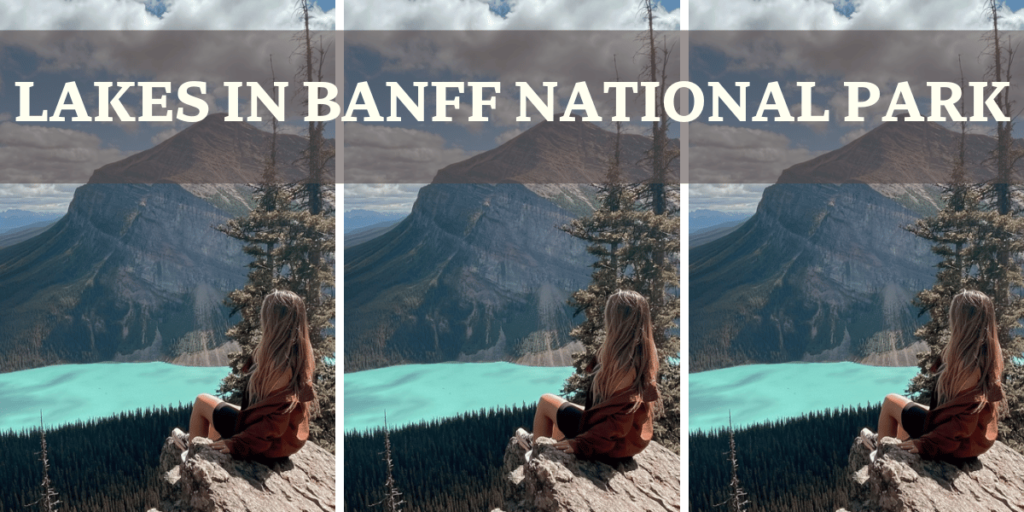
Nestled in the heart of the Canadian Rockies, Banff National Park is a natural wonderland that offers some of the most breathtaking scenery in the world. There you’ll find that the park’s glacial lakes are nothing short of spectacular.
In this guide, we’ll take you on a tour of 11 of the most beautiful lakes in Banff National Park, providing essential details, tips, and insights to help you make the most of your visit.
This Post Is All About Lakes In Banff National Park
11 Lakes In Banff National Park
Banff National Park is renowned for its stunning landscapes, and its lakes are no exception.
These bodies of water, often fed by glaciers, boast vivid colors ranging from deep turquoise to emerald green.
The lakes are surrounded by towering mountain peaks, lush forests, and diverse wildlife, making them perfect destinations for anyone seeking natural beauty and outdoor adventure.
Criteria for Selection
Our selection criteria for these lakes include diversity, accessibility, and unique features.
We aim to showcase a variety of lakes that offer different experiences, whether you’re looking for a challenging hike, a serene picnic spot, or a place to capture that perfect Instagram shot.
Lake Minnewanka
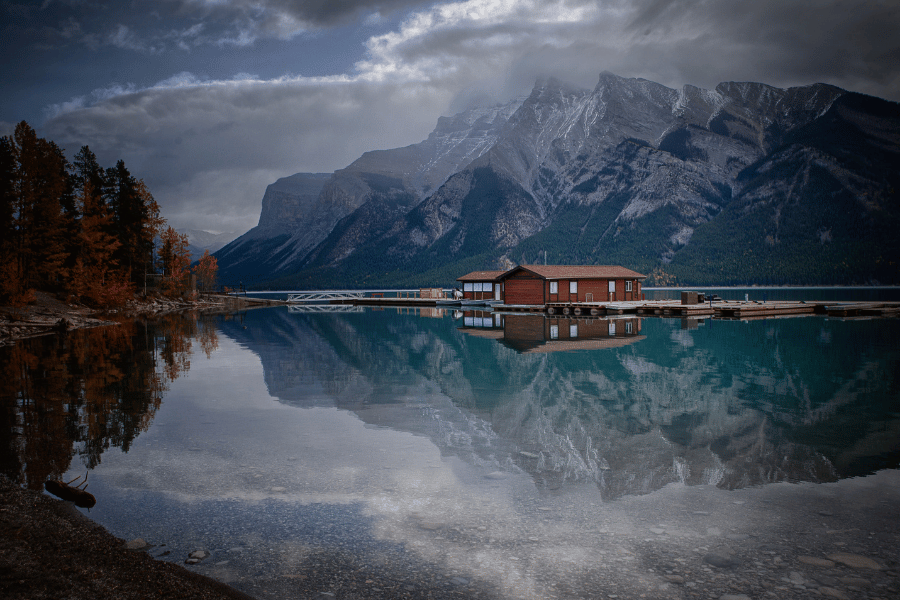
Location: East of the Town of Banff
Size: 21 km long
Elevation: 1,500 meters
Accessibility
Lake Minnewanka is easily accessible via the Trans-Canada Highway, just a short drive from the Town of Banff. There is ample parking available at the lake’s parking lot, and it’s also served by the Roam Public Transit system.
Amenities
The lake offers numerous amenities, including picnic areas, hiking trails, and boat rentals. There are also several campgrounds nearby, such as Two Jack Lake and Tunnel Mountain Campground.
Notable Features
Lake Minnewanka is the largest lake in Banff National Park. It’s known for its stunning blue waters and breathtaking scenery. The lake is also rich in history, with remnants of an old village submerged beneath its surface.
Historical Connection
Lake Minnewanka holds historical significance dating back to indigenous peoples who referred to it as “Water of the Spirits.” Later, it was the site of a hydroelectric dam project in the early 20th century.
Best Times to Visit
The best time to visit is during the summer months when the lake’s water temperature is more comfortable for activities like boating and swimming. However, it’s open year-round and offers different experiences each season.
Personal Tips
For the best views, take a boat tour of the lake, or explore the hiking trails that offer panoramic vistas of the surrounding mountains.
Moraine Lake
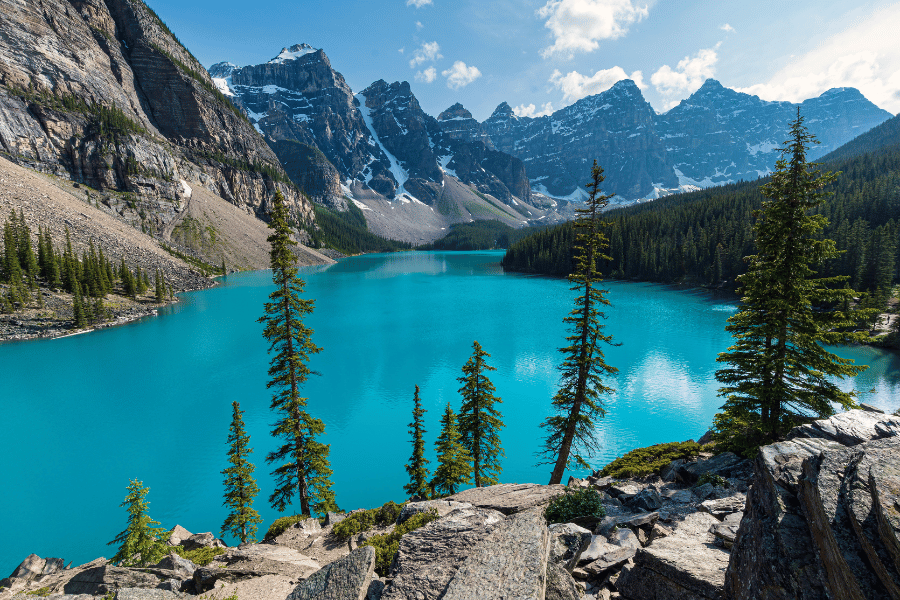
Location: 14 km from the Village of Lake Louise
Size: 0.5 square km
Elevation: 1,884 meters
Accessibility
Moraine Lake is accessible via Moraine Lake Road, which is usually open from late May to early October. The road can get busy, so it’s advised to arrive early or use the Parks Canada shuttle service.
Amenities
There are limited amenities directly at Moraine Lake; however, the nearby Fairmont Chateau Lake Louise offers luxury accommodations, dining, and spa services.
Notable Features
Moraine Lake is one of the most iconic lakes in Canada, famous for its vibrant blue color caused by rock flour suspended in the water. The lake is surrounded by the Valley of the Ten Peaks, providing a postcard-perfect backdrop.
Historical Connection
The lake gained international fame when it was featured on the Canadian twenty-dollar bill in the 1960s.
Best Times to Visit
Visit during the early morning or late afternoon to avoid crowds. The lake is particularly stunning at sunrise and sunset.
Personal Tips
Take the short hike up the Rockpile Trail for the classic view of the lake and surrounding peaks. It’s one of the best spots for photography in the park.
Peyto Lake
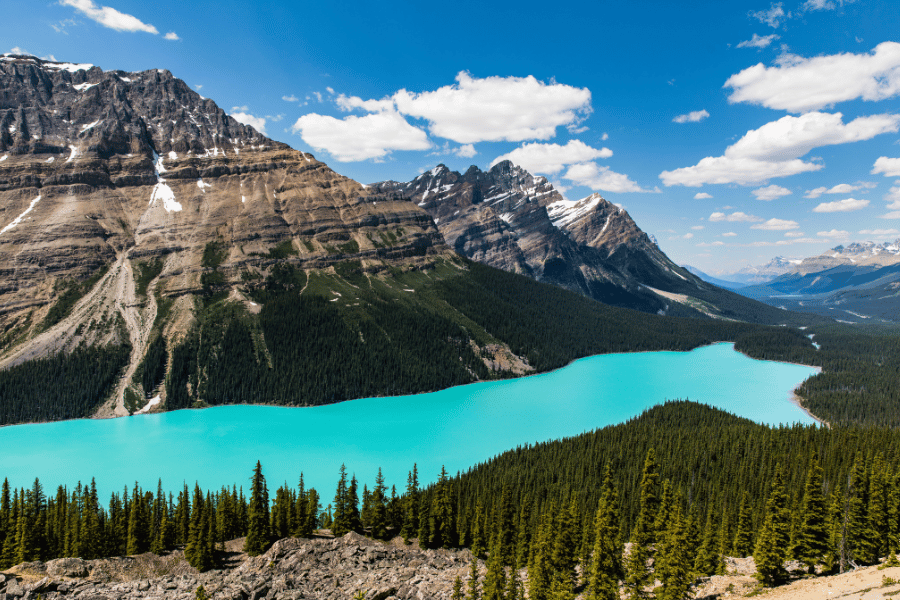
Location: Along the Icefields Parkway
Size: 5.3 square km
Elevation: 1,860 meters
Accessibility
Peyto Lake is easily accessible via the Icefields Parkway, with a well-marked trail leading from the parking lot to the viewpoint. It’s about a 40-minute drive from the Town of Banff.
Amenities
The lake area has several picnic spots and viewing platforms. There are no accommodations directly at the lake, but nearby options include Bow Lake and Hector Lake campgrounds.
Notable Features
Peyto Lake is renowned for its striking turquoise color, which is most vivid during the summer months. The unique wolf-head shape of the lake makes it easily recognizable.
Historical Connection
Named after Bill Peyto, an early trail guide and trapper in the Banff area, the lake holds historical significance as part of the park’s development.
Best Times to Visit
The best time to visit is during the summer when the lake’s color is at its peak. However, it’s also a beautiful winter destination, offering a different kind of scenic view.
Personal Tips
Head to the viewpoint early in the morning to catch the lake in the best light and avoid the mid-day crowds.
Johnson Lake
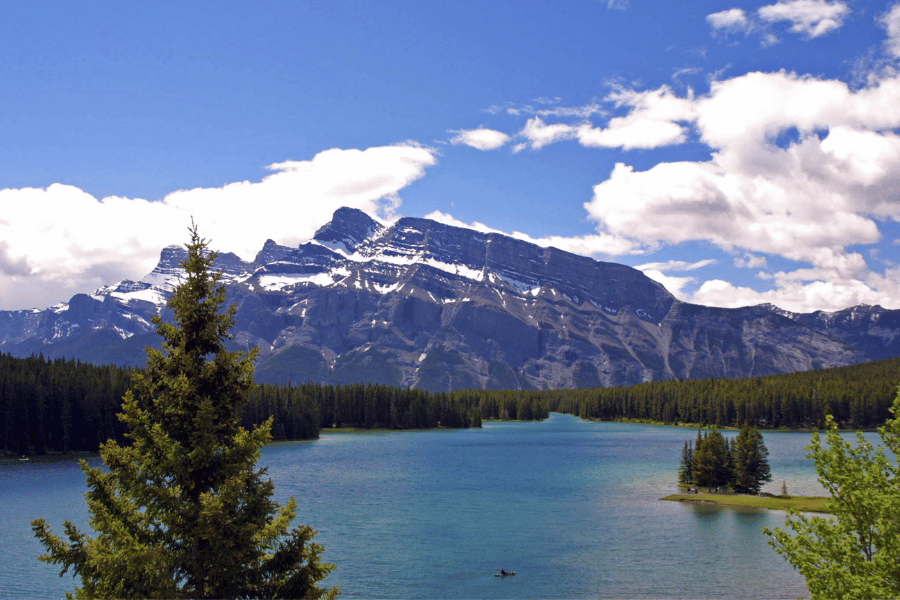
Location: Near the town of Banff
Size: 0.1 square km
Elevation: 1,600 meters
Accessibility
Johnson Lake is a short drive from the Town of Banff, accessible via the Trans-Canada Highway. There is ample parking available at the lake’s parking spot.
Amenities
The lake area offers picnic spots, a swimming area, and hiking trails around the lake. It’s a popular spot for family outings and casual strolls.
Notable Features
Johnson Lake is known for its clear waters and easy access, making it a favorite for swimming and picnicking. The surrounding forest provides a serene backdrop.
Historical Connection
The lake was named after an early settler in the area and has been a popular recreational spot for decades.
Best Times to Visit
Summer is the best time to visit Johnson Lake, offering warm water temperatures for swimming and ideal conditions for picnicking.
Personal Tips
Walk the trail around the lake for beautiful views and a peaceful experience. It’s an easy hike suitable for all ages.
Bow Lake
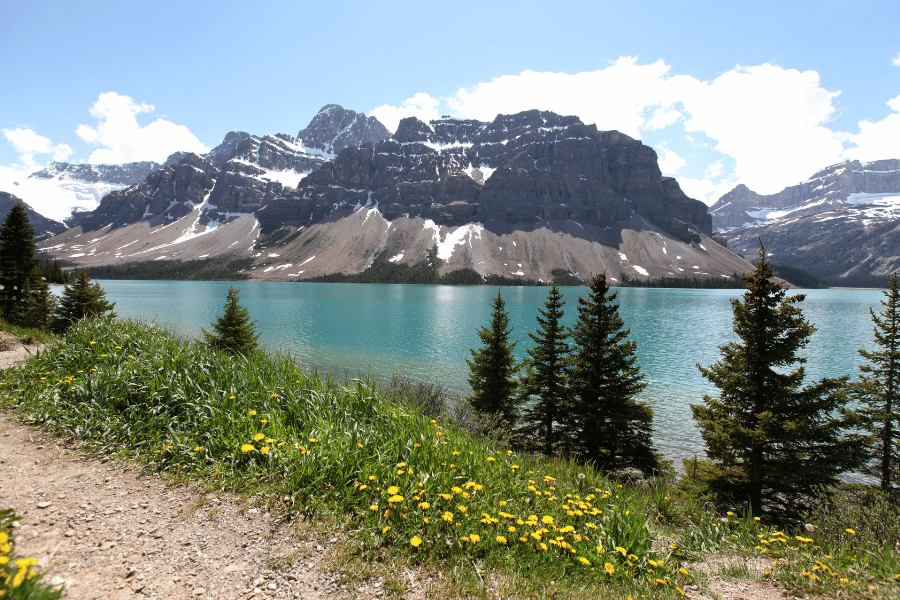
Location: Along the Icefields Parkway
Size: 3.21 square km
Elevation: 1,920 meters
Accessibility
Bow Lake is conveniently located along the Icefields Parkway, with a parking lot near the Num-Ti-Jah Lodge. It’s about a 40-minute drive from the Town of Banff.
Amenities
The lake area includes the historic Num-Ti-Jah Lodge now called The Lodge at Bow Lake, offering accommodations and dining. There are also picnic areas and hiking trails nearby.
Notable Features
Bow Lake is a beautiful glacial lake known for its vibrant blue color and stunning surrounding peaks, including Bow Glacier. It’s a great spot for photography and hiking.
Historical Connection
The lake is named after the Bow River, which originates from the Bow Glacier. Num-Ti-Jah Lodge, built in the early 20th century, adds historical charm to the area.
Best Times to Visit
Summer offers the best conditions for visiting Bow Lake, with clear skies and vibrant water color. Winter also provides a serene, snowy landscape.
Personal Tips
Hike the trail to Bow Glacier Falls for an unforgettable experience and breathtaking views of the glacier and lake.
Two Jack Lake
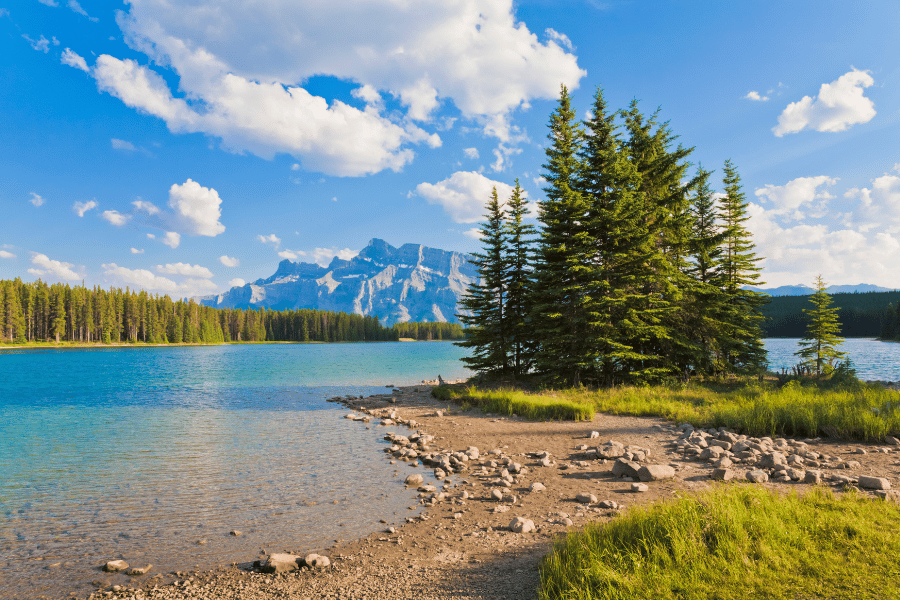
Location: Near Lake Minnewanka
Size: 0.5 square km
Elevation: 1,500 meters
Accessibility
Two Jack Lake is a short drive from the Town of Banff, accessible via Lake Minnewanka Scenic Drive. There is ample parking available near the lake.
Amenities
The lake area includes picnic spots, campgrounds, and hiking trails. It’s a popular destination for canoeing, kayaking and even paddle boarding.
Notable Features
Two Jack Lake is known for its tranquil waters and stunning reflections of the surrounding mountains. It’s a great spot for paddling and photography.
Historical Connection
The lake is named after Two Jack, an early outfitter and guide in the Banff area.
Best Times to Visit
Summer is the best time to visit Two Jack Lake, offering warm weather for water sports and picnicking. It’s also a beautiful spot in the fall with vibrant foliage.
Personal Tips
Rent a canoe or kayak to explore the lake and enjoy the serene surroundings. It’s a perfect spot for a relaxing day on the water.
Lake Louise
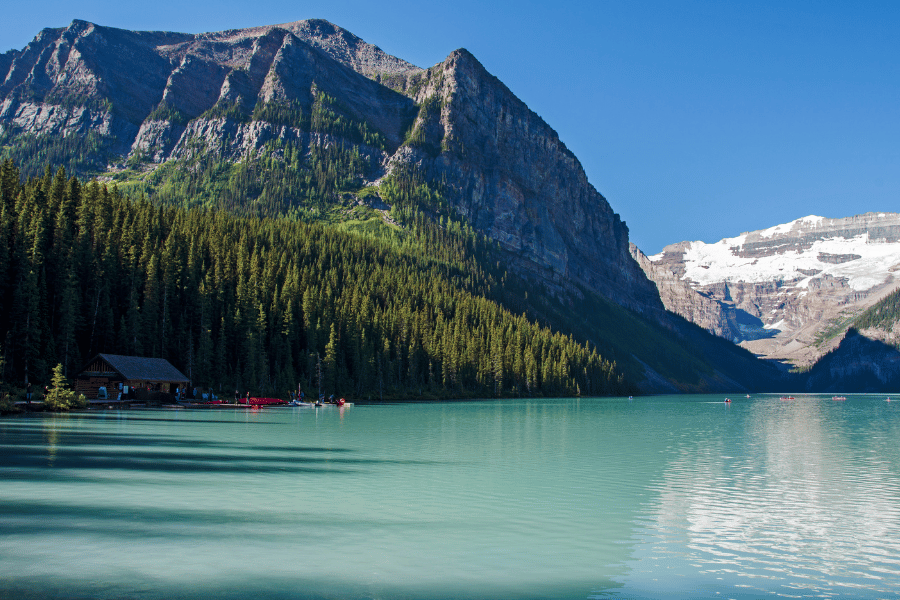
Location: Near the Village of Lake Louise
Size: 0.8 square km
Elevation: 1,750 meters
Accessibility
Lake Louise is easily accessible via the Trans-Canada Highway, with a large parking lot near the lake. The lake is also served by the Parks Canada shuttle bus.
Amenities
The lake area includes the Fairmont Chateau Lake Louise, offering luxury accommodations, dining, and spa services. There are also hiking trails, picnic spots, and boat rentals available.
Notable Features
Lake Louise is one of the most beautiful lakes in the world, known for its stunning turquoise waters and majestic mountain backdrop, including Victoria Glacier.
Historical Connection
Named after Princess Louise, daughter of Queen Victoria, the lake has been a popular destination for over a century. The Fairmont Chateau Lake Louise adds historical charm to the area.
Best Times to Visit
Summer and early fall are the best times to visit Lake Louise, offering clear skies and vibrant water color. Winter also provides a magical snowy landscape and opportunities for ice skating.
Personal Tips
Take the hike to Lake Agnes and the Lake Agnes Tea House for a rewarding experience and stunning views of Lake Louise from above.
Emerald Lake
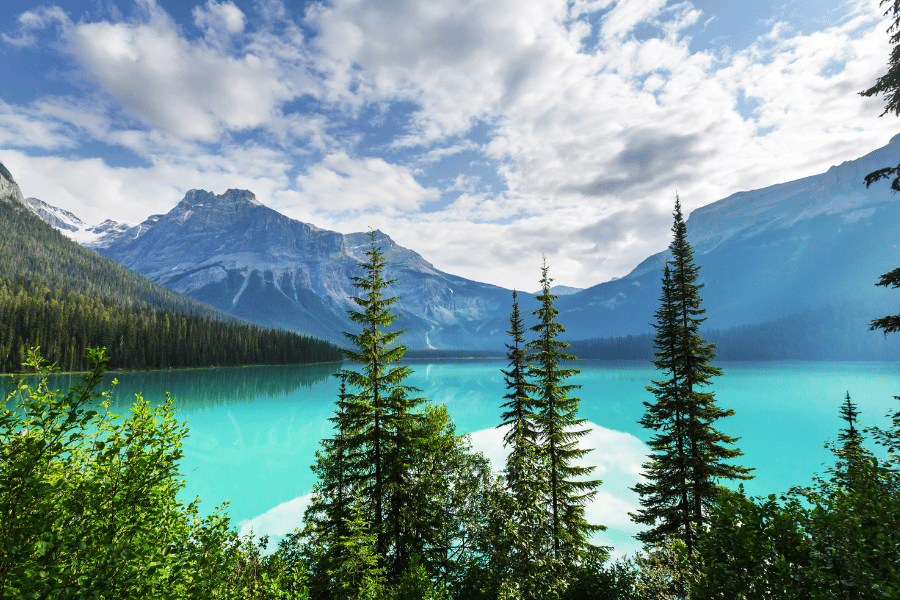
Location: Near the Town of Field, BC (Technically outside Banff NP, but often associated)
Size: 1.2 square km
Elevation: 1,300 meters
Accessibility
Emerald Lake is accessible via the Trans-Canada Highway and a short drive from the Town of Field. There is ample parking available near the lake.
Amenities
The lake area includes the historic Emerald Lake Lodge, offering accommodations, dining, and canoe rentals. There are also hiking trails and picnic spots available.
Notable Features
Emerald Lake is known for its vibrant green color, caused by the presence of fine glacial silt. The surrounding mountains provide a stunning backdrop.
Historical Connection
The lake was discovered in 1882 by Tom Wilson, a pioneer and outfitter in the Canadian Rockies. Emerald Lake Lodge, built in the early 20th century, adds historical charm to the area.
Best Times to Visit
Summer is the best time to visit Emerald Lake, offering clear skies and vibrant water color. Fall also provides a beautiful display of autumn foliage.
Personal Tips
Take the loop trail around the lake for stunning views and a peaceful experience. It’s an easy hike suitable for all ages.
Hector Lake
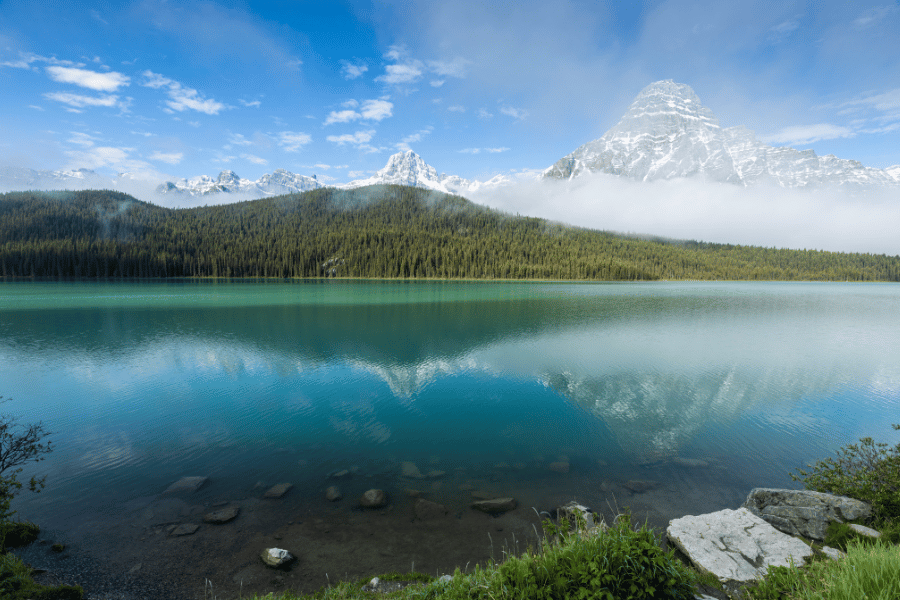
Location: Along the Icefields Parkway
Size: 5.3 square km
Elevation: 1,800 meters
Accessibility
Hector Lake is accessible via the Icefields Parkway, with a short hike from the parking lot to the lake. It’s about a 50-minute drive from the Town of Banff.
Amenities
The lake area is relatively undeveloped, with no facilities directly at the lake. Nearby campgrounds and picnic spots are available along the Icefields Parkway.
Notable Features
Hector Lake is one of the larger glacial-fed lakes in Banff National Park, known for its clear blue waters and stunning mountain views.
Historical Connection
Named after James Hector, a geologist and explorer who was part of the Palliser Expedition in the mid-19th century.
Best Times to Visit
Summer is the best time to visit Hector Lake, offering warm weather and clear skies. The hike to the lake is also more accessible during this time.
Personal Tips
Bring a picnic and enjoy the serene surroundings. The hike to the lake provides beautiful views and a peaceful experience.
Vermillion Lakes
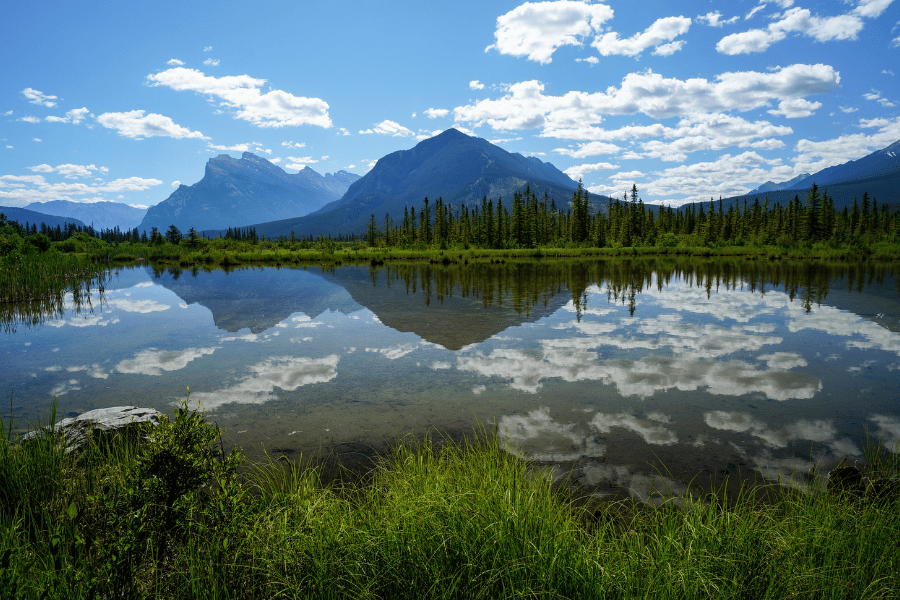
Location: Near the Town of Banff
Size: 0.6 square km combined
Elevation: 1,400 meters
Accessibility
Vermillion Lakes are easily accessible via the Vermillion Lakes Road, a short drive from the Town of Banff. There is ample parking available near the lakes.
Amenities
The lake area includes picnic spots, hiking trails, and viewing platforms. It’s a popular spot for wildlife watching and photography.
Notable Features
Vermillion Lakes are known for their beautiful reflections of the surrounding mountains and vibrant sunsets. The lakes are also rich in birdlife and other wildlife.
Historical Connection
The lakes have been a popular spot for centuries, with indigenous peoples and early settlers using the area for fishing and hunting.
Best Times to Visit
Summer and early fall are the best times to visit Vermillion Lakes, offering clear skies and vibrant reflections. Winter also provides a serene, snowy landscape.
Personal Tips
Visit at sunrise or sunset for the best views and photography opportunities. The lakes offer a peaceful and scenic experience.
Cascade Ponds
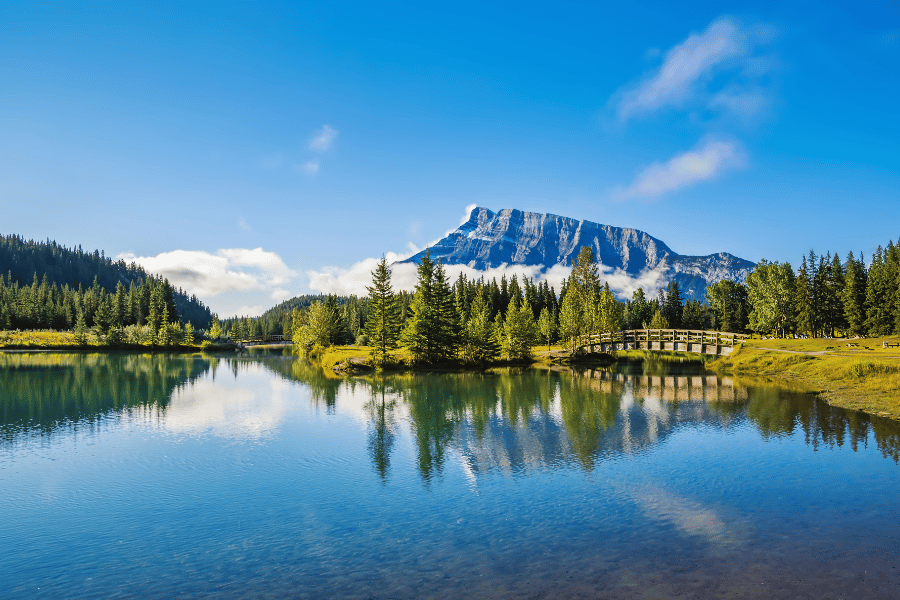
Location: Near the Town of Banff
Size: 0.2 square km
Elevation: 1,400 meters
Accessibility
Cascade Ponds are easily accessible via the Trans-Canada Highway, a short drive from the Town of Banff. There is ample parking available near the ponds.
Amenities
The area includes picnic spots, fire pits, and hiking trails. It’s a popular spot for family outings and casual strolls.
Notable Features
Cascade Ponds are known for their clear waters and beautiful reflections of Cascade Mountain. The surrounding forest provides a serene backdrop.
Historical Connection
The ponds were created in the mid-20th century as a recreational area for visitors to Banff National Park.
Best Times to Visit
Summer is the best time to visit Cascade Ponds, offering warm weather for picnicking and hiking. Fall also provides a beautiful display of autumn foliage.
Personal Tips
Bring a picnic and enjoy the peaceful surroundings. The area is perfect for a relaxing day outdoors.
Conclusion
Banff National Park is truly a treasure trove of natural beauty, and its lakes are among the most stunning features.
From the iconic Moraine Lake to the peaceful Johnson Lake, each body of water offers a unique experience and breathtaking scenery. Whether you’re a seasoned traveler or a first-time visitor, exploring these lakes will leave you with unforgettable memories.
Ready to start your adventure? Share your favourite lakes in Banff National Park in the comments below or plan your next trip to these must-see lakes.
Happy exploring!
